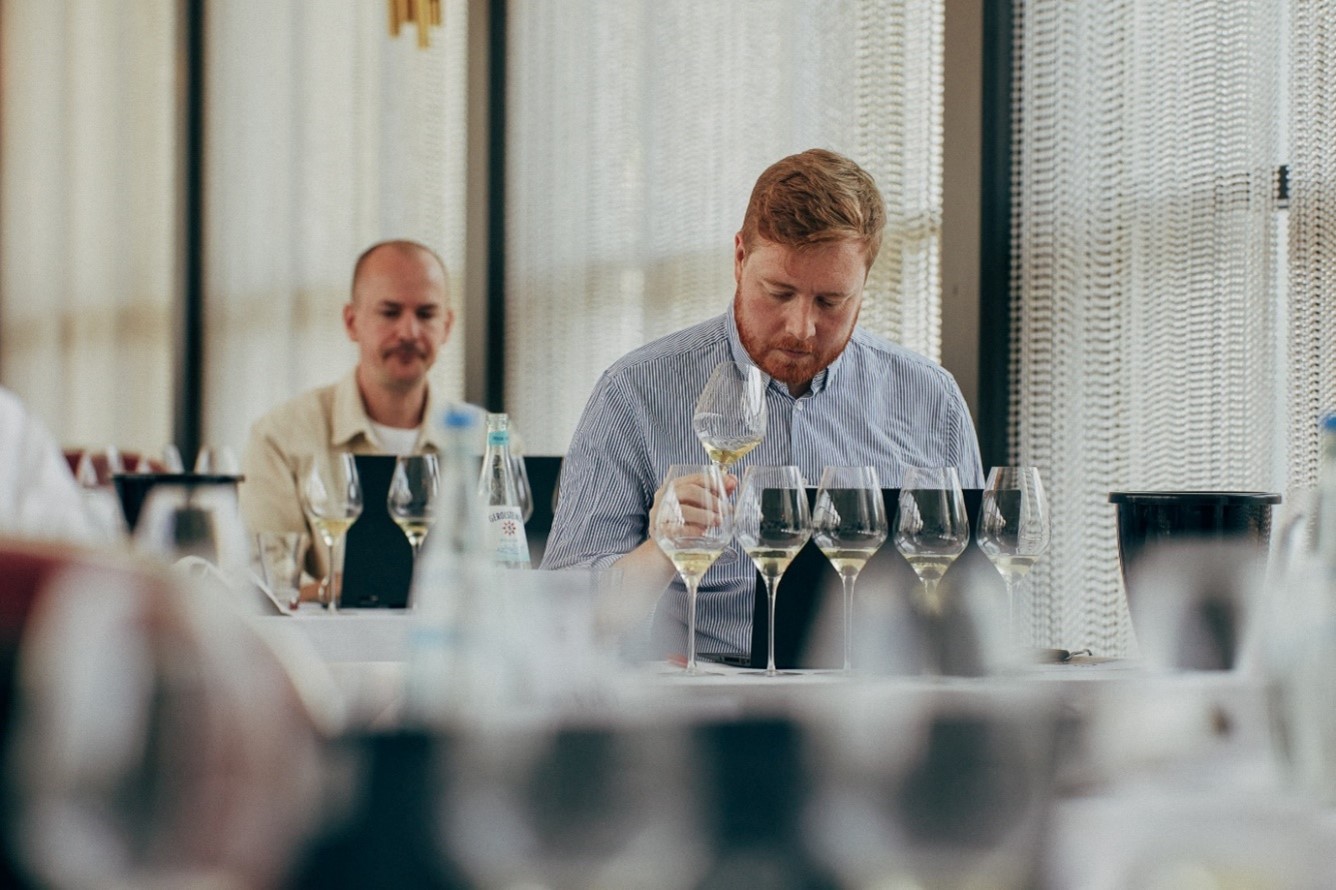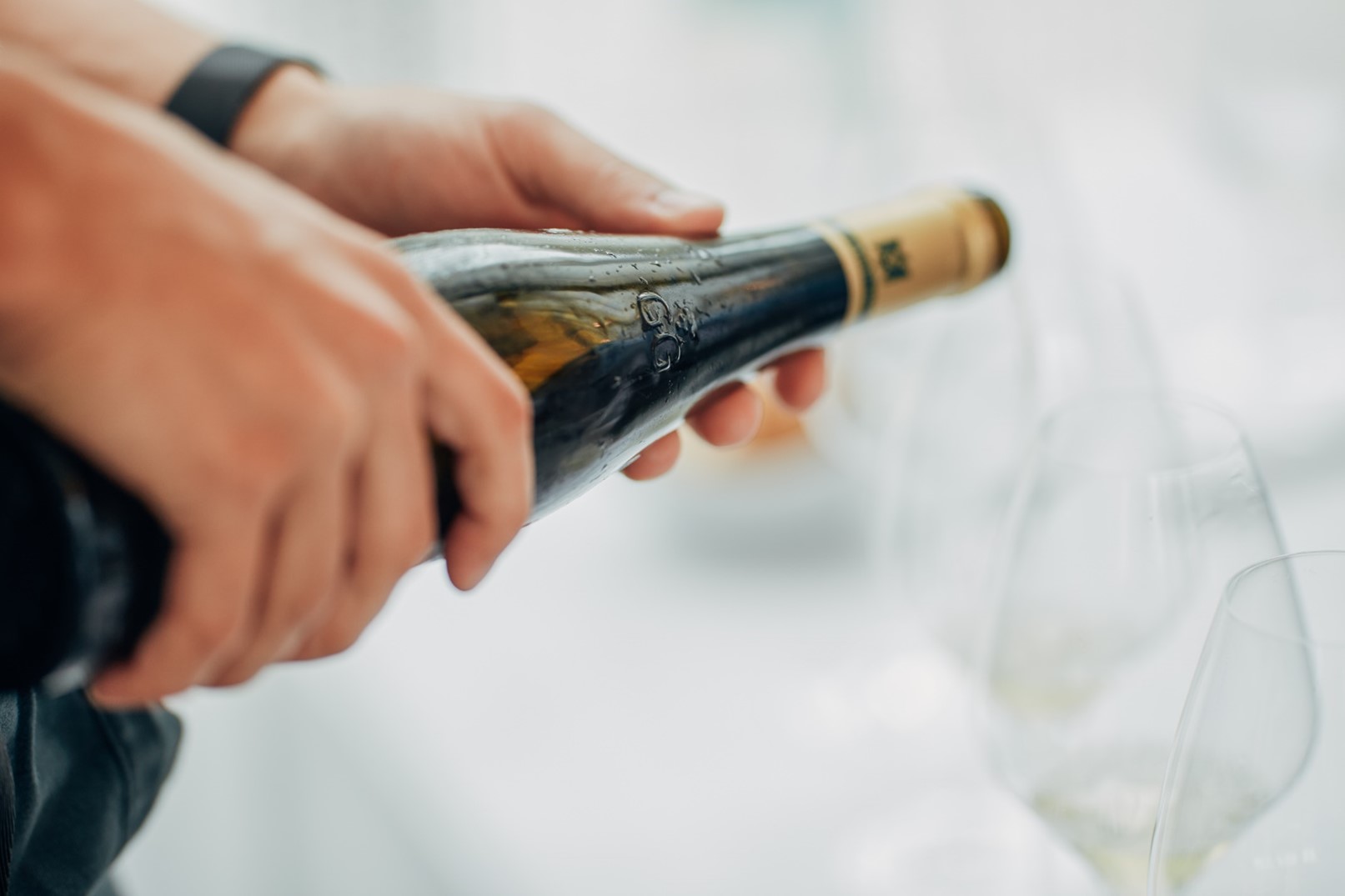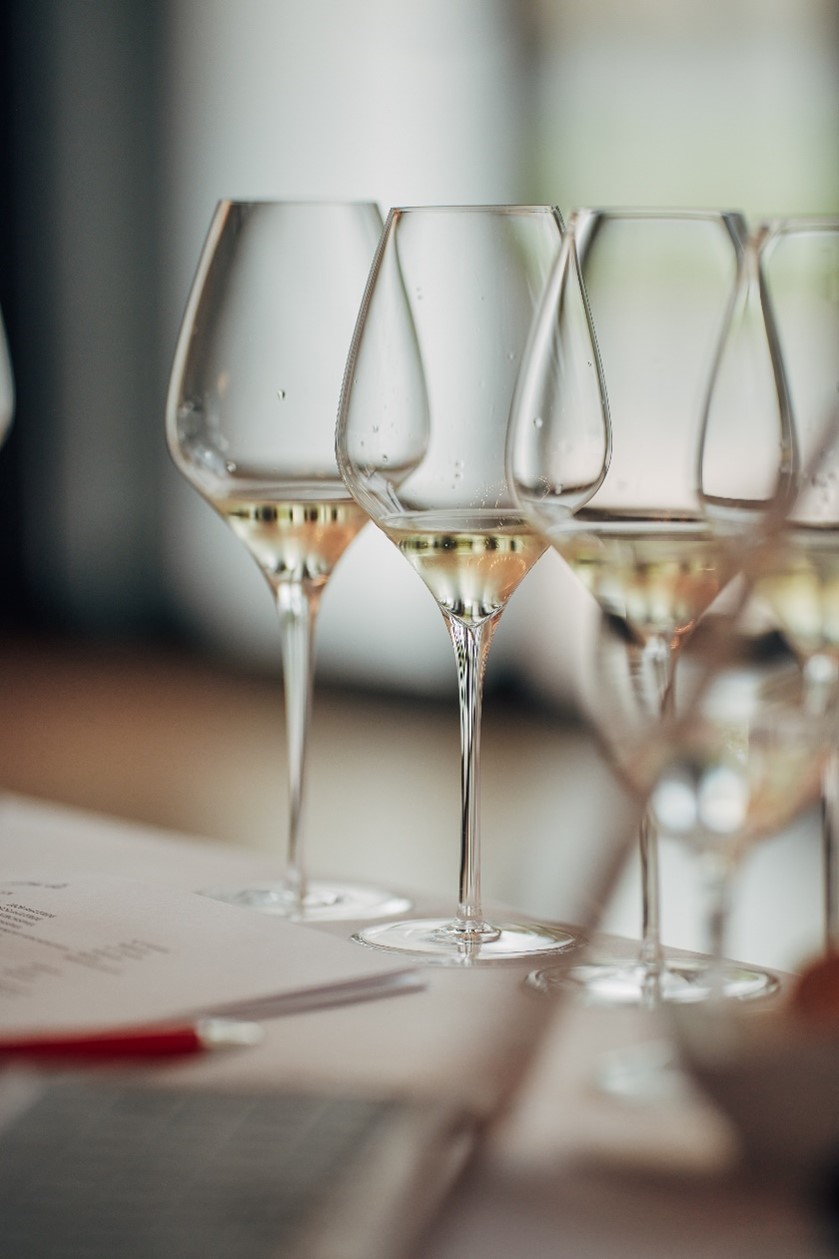
Germany's VDP Grosses Gewächs - The 2022 Preview
30 August 2022
Mark Dearing
After a two-year Covid hiatus, it was an honour to be invited back to Wiesbaden to intensively taste all the upcoming VDP Grosses Gewächs (GG) releases over a full three days, brushing shoulders with the who’s who of the national and international German wine business and press. Much is made of the seamless organisation and eye for detail at this important VDP event, as almost 450 wines are sorted in to 82 flights (and 40 refrigerators) according to their origin, permitting direct producer comparisons across almost all of Germany’s most prestigious single vineyards.
This year’s preview was particularly special as 2022 marks the twentieth anniversary of the birth of the VDP Grosses Gewächs classification. A move that necessitated years of negotiations and diplomacy on behalf of the VDP and all their member estates, the road was not a smooth one. But with the first two decades now behind us, Justerini & Brooks, as longstanding German wine traders, is in step with the VDP when they assert that the Grosses Gewächs and broader VDP Gutswein (Estate), Ortswein (Village), Erste Lage (Premier Cru) and Grosse Lage (Grand Cru) classification process has played a huge rule in internationalising the industry and bringing renewed focus and prestige to Germany’s greatest vineyards. To this we would add that better dry wines and tighter legislation has helped to attract a younger generation of globally mobile, high-end wine collectors.
The VDP considers 2002 as the year in which Germany’s dry wine renaissance began. By this, they mean the pursuit of quality dry wines characterised and classified qualitatively by their origin and not by starting must weight. That change fundamentally negates the national German Wine Law of 1971 which, amongst other things, consolidated around 30,000 historic parcels into 3,000 significantly increased vineyards, the suggestion being that quality wine could be made anywhere with sufficient ripeness, and that limiting the number of vineyards would make life easier for consumers.
What this meant in actuality however was that any historic correlation between vineyard name and quality was lost, and the legal quality Prädikat categories (Kabinett, Spätlese etc.) provided no orientation as to actual quality. This latter failure was exacerbated by producers who understood that the new crossings being developed in Germany at the time would easily achieve high must weights and yields, and prove very useful in blends or as individual bottlings. The Prädikat terms would hence give no real indication as to whether the wine was well-made, interesting, or have any capacity to develop further in the bottle. Simultaneously, wineries charged more on the grounds of starting must-weight, resulting in an ocean of cloying yet insipid wines with no intrinsic character hitting the market, foreshadowing the steady decline in Germany’s reputation as a wine-producing country. Largely difficult vintages in the 1970s and 1980s only made matters worse.
So, it was from 1984 onwards that the VDP, representing around 5% of all German wineries and about 3% of the total German yield, set about developing a new quality framework, doubling-down on their belief that the best way to maintain standards was to uphold a peer-reviewed, by-invitation approach only to producers. This ensured that even if consumers were asked to pay more, then they would at least be guaranteed a properly authentic German wine. Their long-term ambition was to cement a top-tier of producers who would, with the VDP’s marketing and economic support, restore significance to the names of Germany’s finest vineyards and resume the correlation between official Prädikat levels and traditional taste profiles, using only noble varieties.
In 2022, there are 200 member estates across all thirteen German wine regions, making up 6% of the total vineyard area, and 13% of all revenue. 20% of all the organic vineyards in Germany are cultivated by VDP members, with many VDP estates currently in the three-year conversion process. Membership is reviewed every five years, and if there are certain estates and vineyards whose inclusion will likely be debated for all eternity, nobody can deny that the far-reaching ambitions and professionalism of this association is to be hugely respected, and one that many others could learn from.

Germany Buyer Mark Dearing at the VDP Sneak Preview 2022 in Wiesbaden
In 2002, 78 wineries anxiously presented dry wines from about 100 sites for the first time in Berlin. Luckily, 2001 was a good vintage, and the twenty intervening years have proven that Germany’s VDP Grosse Lage sites are capable of producing first class dry wines on the international stage, with a capacity to age and inherent complexity that runs counter to some early resistance. On 1st September 2022, VDP member estates will release a total of 629 GGs and export them to over a hundred countries, with retail prices ranging between 40 and 120 euros per bottle, and more for those sold at the auction. Production levels remain astonishingly small, averaging just 2,800 bottles per wine – easily the equal to (and often less) than many of the great crus of Burgundy and Barolo. Naturally, Riesling dominates, making up 60% of the total, followed by Spätburgunder at 20% – a figure which reflects Pinot Noir’s increasing significance for the industry and qualitative rise over the past twenty years. In fact, Germany now ranks third in the world for Pinot Noir plantings, behind just France and the United States, revelling in an increase from 1,839 HA in 1964 to 11,784 HA in 2019, just 648 HA of which is cultivated by VDP members, about 5% of the total.
Given the breadth and dominance of dry wine production across all of Germany’s wine regions, one can now make the case that it is primarily the dry wines which actually shape the reputation of the vintage in Germany, and increasingly, abroad. Reflecting on the success of the past twenty years, Steffan Christmann, President of the VDP, says that "the fascinating thing that has become clear to all of us in this process is that these vineyards and wines have become personalities with recognisable characteristics year after year. So, what we thought about as theory at the beginning has now become reality in the glass."
A GG must represent the highest standard of dry wine and can only be produced from a single “Grosse Lage” site, not exceeding 9g/l residual sugar.
Can only be produced from noble varieties, as defined by the region: Riesling, Silvaner, Weißer Burgunder, Grauer Burgunder, Spätburgunder, Chardonnay.
Maximum permitted yield of 50 HL/HA.
All grapes must be fully hand-harvested from estate-owned vineyards.
White wines can only be released to the market after a year of maturation on 1st September the following year, two years for reds.
Reds must spend a minimum of 12 months in oak
We will not recount the specifics of the 2021 vintage here as this information can be found in our official vintage report. Suffice to say, 2021 was a cool, late, rather wet vintage, characterised by high acidity levels, low must weights and plenty of extract, bringing salinity, grip and detail to the finished wines. Harvest ran more or less from early to mid-October all the way through to mid-November; timelines that hark back to vintages of yesteryear and which are becoming far less common in the twenty-first century. Strict selections were required to produce quality GGs. Producers needed to isolate healthy, ripe fruit, often in multiple passes, sacrificing yield in the run-up to the harvest to achieve the requisite concentration to balance acidities, and develop enough complexity through the aging process for the wines to properly reflect the site and quality level.
2020 was a wildly contrasting year marked by extended periods of drought and heat. Where Riesling producers saw some rain incidences during the harvest in 2020 – which were beneficial or not, depending on who you speak to – growers of Spätburgunder harvested richly concentrated grapes quickly and early before the rains. That lack of water throughout the season yielded very small berries with a high skin to juice ratio, producing impressively deep, highly aromatic reds of broadly decent freshness, thanks to the early harvest. Most estates report a severe reduction in volume. Tannin management and the use of whole cluster fermentation were important issues, along with the proportion of new oak employed in the aging process. 2020 is seen as a longer-term vintage for laying down.

In isolation, the white wines of 2021 are not generally daunting or uncompromising, but as part of an intense tasting series of almost a hundred wines a day, the best are those that balance 2021’s inherent vitality with fluid fruits and a certain depth.
Out of the 190 whites tasted and properly noted, I scored 20 wines 95-points or higher, 10.5% of the total. The strains of undertaking and noting so many wines in flights precludes any sensible declarations as to the out-and-out best GGs of the vintage, for so much depends on context, but I can say that all of the following producers turned out at least one truly exceptional, standout GG: Peter Lauer (Saar), Von Hövel (Saar), Schloss Lieser (Mosel), Fritz Haag (Mosel), Emrich-Schönleber (Nahe), Schaefer-Fröhlich (Nahe), Dönnhoff (Nahe), Kühling-Gillot (Rheinhessen), Battenfeld Spanier (Rheinhessen), Wittmann (Rheinhessen), Dr. Burklin Wolf (Pfalz) and A. Christmann (Pfalz).
Few surprises there then, people may say. However, there were some amongst what I term the upper-middle tier of wines (scoring 92-95 points for the purposes of this exercise), oftentimes coming from producers and regions I would not ordinarily gravitate to. For example, the Pfalz appeared to have found a generally widespread sense of clarity and depth overall. I was reminded of Valentin Rebholz’s assertion in June that “the Pfalz was the real beneficiary in 2021; a small crop but with good concentration and intensity of flavour.” Conversely, there were highs and lows in the Rheinhessen, and it was more difficult this year to come to any conclusions as to the better overall performers between the Roter Hang (red slate slope), which comprises legendary sites such as Hipping, Pettenthal and Rothenberg, or the limestone driven soils around Westhofen and Höhen-Sulzen, which includes great sites like Morstein, Frauenberg and Kirchenstuck. Across both, Battenfeld Spanier and Kühling-Gillot stood out, bias notwithstanding, whilst Gunderloch is worthy of a mention for what I considered a much improved range this year in the Roter Hang. Superstar estate Wittmann produced GGs in a less angular style than I was anticipating, with a lovely fluidity throughout.
The Nahe on the whole was the most austere to taste, thanks to their frankly startling sense of clarity and precision. As usual the trio of Emrich-Schönleber, Schaefer-Fröhlich and Dönnhoff lead the pack, and I feel that in 2021 there is an even bigger quality gap between these three estates and the rest of the Nahe than usual, for reasons I don’t fully understand. In the Mosel valley, I strongly feel that the Haag brothers, in their own different ways, represented the best of the dry wines in 2021. Fritz Haag a model of high toned, light-touch Mosel sophistication, Schloss Lieser the most elemental and thrilling. For the first time I felt encouraged by Grans-Fassian, who submitted very respectable wines; the cooler vintage perhaps playing well to the warmer conditions around Trittenheim, Dhron and Leiwen. Conversely, the Ruwer and Saar, with a few exceptions, seemed to fly a little under-the-radar, with a relatively light, understated style across the board. However, auction bottlings from Peter Lauer (Lambertskirch) and Von Hövel (Horecker) showed very well, as did Zilliken’s Rausch and a few wines from Van Volxem. The Rheingau VDP opted to present majority 2020 whites in keeping with their later release schedule going forward. Details for another day.
In summation, there is lots to love in 2021, particularly for those who favour the cool, mineral purity and salinity of dry German Riesling at its finest. As is often the case, wines that are not necessarily the most flashy at the outset may well prove to be the long-distance runners we hope for. 2021, as borne out over the three days, is an exceptionally elegant vintage in youth, with haunting perfumes, precision and freshness. They should age handsomely. Give it a couple of years and those GGs that appeared shy or were simply overlooked by myself and others, I am sure, will slip in seamlessly to a mass of superb, vital 2021 Rieslings in time. The best advice is to buy 2021 GGs from good producers on release, as there is not much to go around, and they will be harder to find once the rest of the world has caught on.

The general improvement in German red wines has been well-documented. Producers in this generation understand that yields must be controlled in order to arrive with sufficient concentration and a good skin to juice ratio. Not only does this produce fuller-bodied more impressive reds, it also reduces exposure to botrytis infection and early oxidation. A huge amount of work has been undertaken by Geisenheim University to develop new clones of Spätburgunder which enhance colour and reduce yield, producing a more intense varietal character. In conjunction with well-selected Burgundian clones, German producers now have good material to work with when it comes to younger plantings, all of which bodes well for the future.
2020 plays well in to this modern style of German Spätburgunder, offering more-or-less guaranteed ripeness and winemakers the opportunity to really define their style. Between Bernhard Huber and Rudolf Fürst, this has resulted in two absolutely belting ranges of GGs, combining ripeness with soaring aromatics, a chiselled acidity and present but ripe tannins.
It seems though that these two producers’ natural feeling for Pinot is not fully widespread, with 2020 reds running the gamut from the beautiful to the “less so”. The Pfalz appears to be particularly variable, perhaps unsurprising given its size and number of producers, but, on the whole, if there are moments of rusticity and overextraction, more often than not it fees that there is a groundswell of very good middle-ranking producers biting at the heels of Huber and Furst, which can only be a good thing. Furthermore, the absence of several prominent Ahr producers this year reminded us of the devastation of the floods in 2021, which wiped out stocks from great estates like Meyer Näkel, Stodden and others – no doubt they’ll be back fighting fit next year.
The future is bright for Spatburgunder in Germany, but for the moment we would still advise buying selectively from producers you know and trust.


